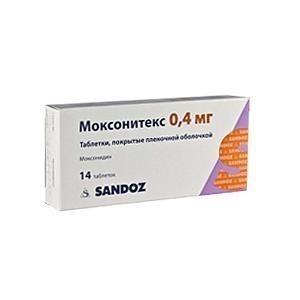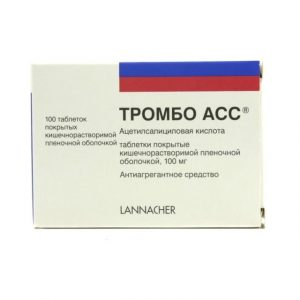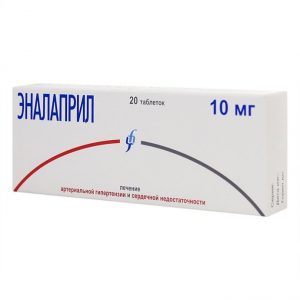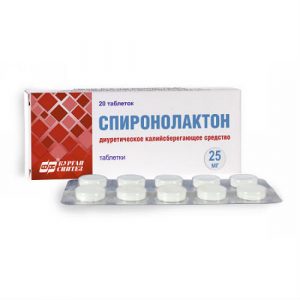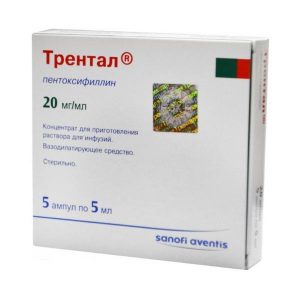Description
Release form
Film-coated tablets.
Packing
14 pcs.
Pharmacological action
Moxonitex is a selective imidazoline receptor agonist. Responsible for reflex control of the sympathetic nervous system (receptors are located in the ventero-lateral region of the medulla oblongata). Slightly associated with central 2-adrenergic receptors, reduces systolic and diastolic blood pressure with a single and prolonged administration.
With prolonged use, it reduces left ventricular myocardial hypertrophy, levels the signs of myocardial fibrosis of microarteriopathy, normalizes capillary blood supply to the myocardium, reduces OPSS, pulmonary vascular resistance, while cardiac output and heart rate are not significantly changed.
During treatment, the activity of norepinephrine and epinephrine, renin, angiotensin II at rest and during exercise, atrial natriuretic peptide (during exercise) and plasma aldosterone decreases.
Decreases tissue insulin resistance by 21% compared with placebo in obese patients and insulin-resistant patients with moderate severity of hypertension, stimulates the release of growth hormone. Does not affect glucose and lipid metabolism.
Duration of action – more than 12 hours.
PHARMACOKINETICS
Absorption
After oral administration, the absorption is 90%. Eating does not affect the amount of absorption. With a single oral intake, the bioavailability is 88%. Cmax in blood plasma is determined 30-180 minutes after ingestion and is 1-3 ng / ml.
The interval between the achievement of Cmax and a marked decrease in blood pressure at rest differs by an average of 10%, with a load of 7.7%.
Distribution of
Binding to plasma proteins is – 7%. Vd – 1.4-3 l / kg. Penetrates through the BBB. It does not cumulate with prolonged use.
Excretion of
T1 / 2 – 2-3 hours. Excreted by the kidneys – 90% (50-75% – unchanged, 20% – as metabolites).
Pharmacokinetics in special clinical cases
Moxonidine is excreted in small amounts during hemodialysis. No significant differences in pharmacokinetics were found in patients of young and old age.
In patients with moderate renal insufficiency (CC 30-60 ml / min) and severe (CC less than 30 ml / min), plasma Css and final T1 / 2 are approximately 2 and 3 times (respectively) higher than in patients with arterial hypertension with normal renal function (CC more than 90 ml / min). Therefore, patients with moderate renal failure should be prescribed with caution and its dose should be selected individually.
Indications
Arterial hypertension.
Contraindications
angioedema in the anamnesis of
SSSS or sinoatrial blockade
AV block II and III degree
severe bradycardia (less than 50 beats / min at rest)
severe cardiac arrhythmias severe heart disease NYHA classification)
unstable angina pectoris
severe hepatic insufficiency
severe renal failure (CC less than 30 ml / min, serum creatinine content more than 160 μmol / l)
under 18
lactation
tion galactose intolerance, lactase deficiency or glucose-galactose malabsorption syndrome
hypersensitivity to moxonidine or any other component of the drug.
With caution and under the supervision of a physician, the drug should be used in patients after a recent myocardial infarction or in cases of peripheral circulatory disorders (intermittent claudication, Raynaud’s syndrome) in patients with moderate renal impairment (CC 30-60 ml / min. Serum creatinine 105- 160 μmol / l), with impaired liver function, during pregnancy, depression, glaucoma, epilepsy, Parkinson’s disease.
Special instructions
During treatment, regular monitoring of blood pressure, heart rate and ECG is required.
If necessary, the cancellation of simultaneously taken beta-blockers and Moxonitex are the first to cancel beta-blockers and only after a few days – Moxonitex. Moxonitex should be discontinued gradually.
Effect on the ability to drive vehicles and control mechanisms
The effect of the drug Moxonitex on the ability to drive vehicles or drive vehicles has not been studied. Taking into account the possible occurrence of dizziness and drowsiness, patients should be careful when engaging in potentially hazardous activities, such as driving vehicles or driving machinery that require an increased concentration of attention.
Composition
1 tab. contains:
Active substances: moxonidine 400 mcg
Excipients: lactose monohydrate, povidone K25, crospovidone, magnesium stearate.
Composition of the film coat: opadry Y 1 7000 (titanium dioxide, hypromellose, macrogol 400), dye iron oxide red
Side effects of
From the cardiovascular system: rarely – vasodilation symptoms sometimes – marked decrease in blood pressure, syncope, Raynaud’s syndrome, peripheral edema.
From the side of the central nervous system: often – dizziness, headache, drowsiness, fatigue, sleep disturbance, sometimes – paresthesia, depression, anxiety.
From the digestive system: often – dry oral mucosa, nausea, anorexia, constipation.
From the genitourinary system: sometimes – retention or urinary incontinence, impotence and / or decreased libido.
From the sensory organ: sometimes – dry eyes, causing itching or burning sensation.
Allergic reactions: sometimes – urticaria, pruritus, exanthema, angioedema.
Other: sometimes – gynecomastia, soreness of the parotid glands.
Drug interaction
When co-administration of moxonidine with other antihypertensive drugs, a mutual increase in action occurs.
Beta-blockers increase bradycardia, the severity of the negative foreign and dromotropic effects.
Moxonidine enhances the hypotensive effect of ethanol, sedatives, slow calcium channel blockers (derivatives of dihydropyridine).
Moxonidine should not be used concurrently with tricyclic antidepressants.
Tolazolin dose-dependently reduces the hypotensive effect of moxonidine.
Overdose
Symptoms: headache, severe BP, bradycardia, palpitations, weakness, drowsiness, dryness of the oral mucosa rarely – vomiting and epigastric pain. Paradoxical arterial hypertension and hyperglycemia are potentially possible.
Treatment: symptomatic. There is no specific antidote. In case of marked decrease in blood pressure, it is recommended to restore BCC due to the introduction of fluid. -Adrenoreceptor antagonists are capable of reducing or eliminating transient arterial hypertension when overdosed with moxonidine.
Storage Conditions
The product should be stored out of the reach of children at a temperature not exceeding 25 ° C.
Shelf life
2 years.
Deystvuyushtee substance
moxonidine
Conditions of release of pharmacies srdlpp1 Terms and conditions of vocational
dosage form
tablets
Possible product names
MOXONITEKS 0.0004 N14 TABLE P / O
MOXONITEKS 0.4MG. No. 14 TAB.P / O
Moxonitex 0.4mg Tab. p / pl / rev X14 (R)
Moxonitex 0.4mg No. 14 tab.
moxonitex tablet po 0.4 mg n14
